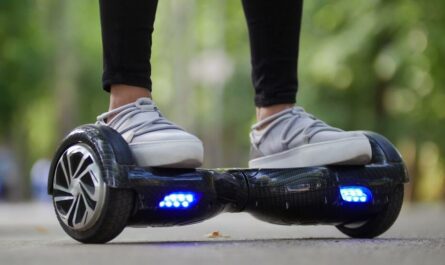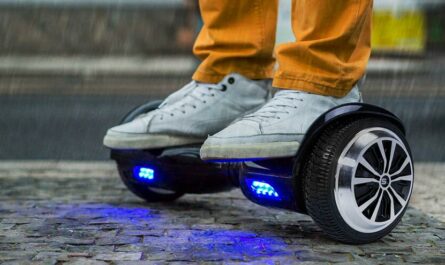Have you ever wondered if it’s safe to ride a hoverboard in the rain? While zipping around on this futuristic device may seem like a lot of fun, it’s important to consider the potential risks and limitations. In this article, we will dive into the question of whether or not you can ride a hoverboard in the rain. We’ll explore the risks associated with wet conditions and provide some tips to ensure your safety.
Table of Contents
Are Hoverboards Waterproof?
Here is the crucial question for riders wanting to roll in the rain – are hoverboards waterproof? The short answer is no. The majority of mass-produced consumer hoverboards have limited water protection at best. They simply aren’t designed for riding through puddles or wet terrain.
Manufacturers focus protective efforts on the exterior shell, applying various waterproofing and water-resistance treatments. These can handle small splashes or damp ground. But the interior electronics remain vulnerable.
Key components like the:
- Motherboard
- Lithium battery
- Motors
- Charging port
Have minimal sealing from water. If moisture seeps into these parts it can cause irreparable damage. At minimum this will disable your hoverboard until extensive repairs. At worst, it can cause smoking, meltdowns, or even battery fires and explosions. Not something you want happening between your legs!
While some high-end versions claim to be waterproof, full protection is rare. Unless designed specifically for wet conditions, most hoverboards should stay far away from puddles and rain.
Assessing Waterproof Ratings
So how can you tell how water-resistant a hoverboard is? Check for an IP waterproof rating before purchase. This measures the level of sealing and liquid protection for electronics. The higher the number, the more waterproofing.
The International Protection Marking, IP Code, or Ingress Protection Rating classifies electrical devices on a scale from IP0 to IP69. For hoverboards, the first digit after IP refers to dust protection, while the second digit indicates liquid protection. Common rain-related ratings include:
- IPX4 – Splash proof from all directions
- IPX5 – Protected against low pressure water jets
- IPX6 – Powerful water jet resistance
- IPX7 – Protected against temporary immersion
IPX4 represents the minimum rating for light rain and puddle resistance. Anything below IPX4 only offers minimal moisture protection. Of course, independently certified ratings don’t guarantee real-world performance. Carefully read reviews before trusting marketing claims about waterproofing levels.
The Risks of Riding Hoverboards in The Rain
Understanding why hoverboards and water don’t mix requires examining the potential risks:
1. Slipping and Falling
Wet conditions make controlling hoverboards much more difficult. Even small puddles or damp sidewalks can cause sudden loss of traction. Tires start sliding around instead of gripping the ground. This forces the gyroscopes to work overtime to maintain balance.
Sudden acceleration or turning on slick surfaces easily breaks the hoverboard’s equilibrium. Falls become much more likely, especially at higher speeds. Riders who try maneuvering around puddles often lose control.
Falling from a hoverboard can lead to injuries like:
- Sprains and fractures
- Head trauma if unhelmeted
- Skinned knees and elbows
Wet weather transforms an otherwise smooth hoverboard ride into a slippery accident waiting to happen.
2. Short Circuits
If water manages to get past the exterior defenses, it can penetrate deep into a hoverboard’s vital electronics. Many internal components are unsealed or minimally protected from moisture.
Just small amounts of water contact can trigger dangerous short circuits or electric malfunctions. Effect include:
- Power failures
- Component destruction
- Sparking
- Smoke
- Fires
At worst, water could reach the lithium battery and trigger thermal runaway events. Uncontrolled battery fires have plagued hoverboards in the past. While manufacturing safety has improved, water still poses a short circuit risk.
3. Permanent Water Damage
Short rides through light rain will likely damage a hoverboard over time. The motherboard, battery, motors, and other electronics are not designed for wet environments. Water causes corrosion, electrical shorts, and mineral deposits.
Extended exposure to rain or puddles often causes permanent destruction of hoverboard parts. Waterlogged components will need complete replacement. This can cost $200 or more depending on the parts affected.
Even brief submersion in a puddle can irreversibly fry motors or the motherboard. Letting your hoverboard sit wet for hours is sure to spell its demise. Water and electronics never mix well!
4. Voiding the Warranty
Another consequence of rain damage is voiding the manufacturer’s warranty. The fine print in most hoverboard manuals prohibits riding in wet conditions. Any resulting water damage will be excluded from coverage.
Repairing water-damaged parts like the motherboard or motors leads to hefty out-of-pocket repair bills. Get ready to pay $100 to $300+ to get a soaked hoverboard working again.
Unless you have an extended protection plan, liquid damage repairs are on your dime. So think twice about risking that puddle, because the warranty won’t pay for water-induced accidents.
Precautions for Riding Hoverboards in the Rain
Okay, so clearly hoverboards and rain don’t go together smoothly. But what if you get caught in a downpour far from shelter? Here are some damage control tips to safely ride out wet conditions:
1. Ride Slowly and Cautiously
If you must ride through rain, reduce speeds to a crawl. This helps maintain control on slippery surfaces. Avoid sudden accelerations, braking, or sharp turns which can slide the wheels. Gentle maneuvers only!
Remain centered over the wheels and be prepared to step off if balance is lost. Watch out for pedestrians who may dart under eaves for cover. Yell “passing on your left!” to avoid collisions.
2. Avoid Puddles and Standing Water
This cannot be stressed enough – avoid puddles deeper than the wheel clearance! Even brief submersion of the battery compartment or motors can cause critical water damage and shorts.
Scope out puddles before riding through and steer around any that seem too deep. You don’t want to hydroplane your hoverboard through an unseen pothole pond.
3. Use Protective Coverings
If heavy rain is unavoidable, using plastic covers to shield vulnerable electrical components can help. Encase the motor housings and battery compartment in waterproof layers for temporary protection.
Quick DIY options include plastic bags, a shower cap, or plastic food wrap. Just don’t cover the sensors or wheels. Make sure to remove any coverings immediately after reaching shelter.
4. Dry It Off ASAP
After any wet ride, dry your hoverboard with towels immediately upon reaching shelter. Remove the coverings, battery, and wheels to air out all components. Never store it wet. The quicker you dry it, the less chance of long-term water damage.
5. Apply Waterproofing Sprays
Special waterproofing sprays add an extra layer of rain protection to hoverboards. These liquid sealants can repel water from seeping into the outer shell.
Look for sprays safe for electronics and plastics. Avoid oil-based petroleum products. Test applications on inconspicuous areas first. Reapply after heavy rain exposure. Some options include:
- CorrosionX Heavy Duty Water Repellent
- LiquiShine Plastic Waterproofing Spray
- CRC Marine Water Resistant Coating
Sprays provide supplemental protection but are not foolproof in heavy rain. Take every precaution to keep the internals dry.
What To Look For in A Wet Weather Hoverboard
When choosing a hoverboard to ride in the rain, keep these key features in mind:
- Tires – Air-filled, all-terrain tires provide the most traction on slippery surfaces. The wider, the better for stability.
- IP waterproof rating – Look for a rating of IPX4 and above to handle splashes. IPX5 or IPX6 gives even more protection.
- Reviews – Read reviews from real owners on how it handles in wet conditions. Don’t trust marketing claims alone.
- Weight capacity – Heavier riders need sturdy hoverboards that maintain balance on slick terrain.
- Tread – More tire tread allows better gripping and channeling water through the treads.
While no hoverboard is perfect for heavy rain, choosing one designed for wet terrain will let you ride with confidence even when the weather takes a turn for the worse. Stay safe out there!
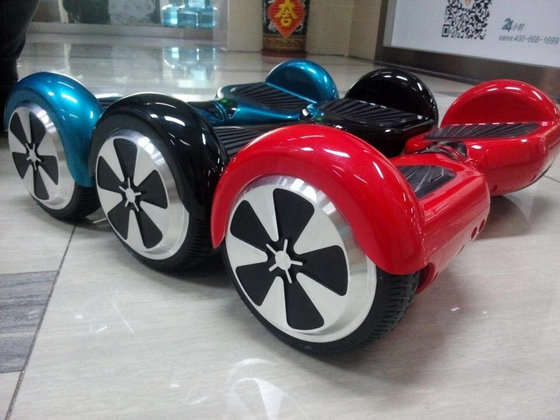
5 Best Hoverboards for Wet Weather Review
1. Segway Ninebot S-Plus
The Ninebot S-Plus from Segway is arguably the top hoverboard for wet conditions available today. It’s designed from the ground up to traverse all types of terrain, including puddles, mud, and light rain.
Key Features:
- 10.5 inch pneumatic tires – The large air-filled tires provide exceptional traction on wet surfaces while absorbing impacts.
- IPX5 water resistance rating – Certified to withstand low pressure water jets from any direction, making it capable of handling light rain and splashes.
- Fully sealed casings – All electronic components are encased and protected against water ingress.
- Max speed of 12 mph – Doesn’t lose performance or speed, even over wet terrain.
- Up to 15% hill grade climbing – Easily rolls through puddles and over wet grass or pavement.
- Integrated LED headlights – Improves visibility on dark, rainy days.
With its unmatched wet weather capabilities, the Ninebot S-Plus is the closest you’ll get to a waterproof hoverboard today. But that performance comes at a steep price – around $730. If you want the very best for taking on rain and muddy trails, the S-Plus delivers.
2. Halo Rover X
The Halo Rover X is another top-rated off-road hoverboard built to handle adverse weather. Its rugged design makes it well-suited for riding in light to moderate rain conditions.
Key Features:
- 8.5 inch all-terrain tires – Large, shock-absorbing tires with deep treads provide control across wet surfaces.
- IPX4 water-resistance rating – Upper level protection against splashes from all directions.
- Aluminum alloy fenders – Prevents water from spraying up onto the board and rider from the tires.
- Weight capacity of 265 pounds – Remains stable even for heavier riders on slippery surfaces.
- Top speed of 10 mph – Doesn’t lose power or spin out easily like some models when wet.
While not fully waterproof, the Halo Rover X’s robust design can conquer wet grass, puddles, and light rain better than standard hoverboards. It delivers premium performance for around $500.
3. Swagtron Swagger 5
Swagtron has built the Swagger 5 to handle all types of terrain, including damp conditions. It strikes a nice balance between water protection and affordability.
Key Features:
- 10 inch air-filled tires – Grippy tires improve stability and prevent slipping on wet ground.
- IPX3 rating – Protection against spraying and light splashing water.
- Durable construction – Rugged aluminum body and components hold up to abuse and the elements.
- Patented SentryShield technology – Multi-layer battery pack housing for extra water resistance.
- Top speed of 7.5 mph – Doesn’t lose power or fishtail on wet surfaces.
While it only carries an IPX3 rating, the Swagger 5 outperforms many standard hoverboards when wet thanks to its rugged build. An excellent value pick for around $300.
4. Gyroor Warrior
For shoppers on a budget, the Gyroor Warrior provides solid wet weather capabilities without breaking the bank. It’s a great economical choice for riding through puddles and light rain.
Key Features:
- 8.5 inch all-terrain tires – Large enough to absorb impacts and not lose traction when wet.
- IPX4 rating – Upper entry-level water protection rating.
- Max weight of 265 pounds – Provides stability for heavier riders on slippery terrain.
- UL2272 certified – Rigorously tested for electrical and fire safety.
- Maximum speed of 9.95 mph – Has enough power to push through wet conditions.
Priced at around $250, the Gyroor Warrior provides impressive water protection that outclasses other boards at this low price point. It’s a great budget pick for riding in the rain.
5. Hover-1 Drive Hoverboard
If you’re looking for a basic self-balancing scooter that can handle wet pavement and grass, the Hover-1 Drive is a great value option.
Key Features:
- IPX4 water resistance – Protection against splashes from any direction.
- Proprietary resin shell – Sheds water better than plastic shells.
- Anti-slip foot pads – Maintain grip and stability even when surfaces are wet.
- LED headlights – Helps to see and be seen when riding in rainy weather.
- Maximum speed of 7.4 mph – Enough power to push through puddles without losing traction.
For under $150, the Hover-1 Drive punches above its weight class when it comes to water protection. It’s a basic but reliable choice for wet sidewalks and grass.
The Verdict: Should You Ride Hoverboards in the Rain?
Given all the risks explored, what’s the final verdict? Is it safe to ride your hoverboard in the rain?
For most common electric hoverboards with low to moderate water resistance, the answer is no. Riding in anything beyond a light drizzle or wet grass invites trouble in the form of falls, short circuits, irreparable damage, and voided warranties. It’s best to avoid rain altogether if possible.
However, with the proper model and precautions, limited wet weather use may be possible:
- All-terrain hoverboards engineered specifically for puddles and mud offer the best rain protection. Look for high IP ratings and sealed components.
- For standard models, treat rain as an emergency situation only. Take it slow, avoid puddles, dry it off immediately, and use protective coverings when possible.
- Casual splashes and damp pavement poses lower risks for some hoverboards with decent IPX4 water resistance. But stay far away from heavy rain and deep puddles.
While some hardcore riders take their chances in storms, exercise caution. Finding a covered parking spot and waiting out showers will keep your hoverboard rolling worry-free for years to come. Stay safe and keep those boards dry!
Related posts:
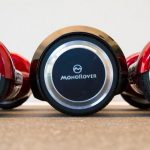 How Much Do Hoverboards Cost? 2024 Prices and Guide
How Much Do Hoverboards Cost? 2024 Prices and Guide 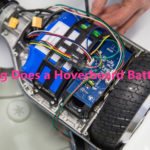 How Long Does a Hoverboard Battery Last? Maximizing Your Ride
How Long Does a Hoverboard Battery Last? Maximizing Your Ride 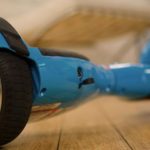 What Is A Hoverboard – When Was The Hoverboard Invented?
What Is A Hoverboard – When Was The Hoverboard Invented? 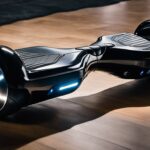 How Much Does Hoverboards Weigh? A Complete Guide
How Much Does Hoverboards Weigh? A Complete Guide  Are Hoverboards Allowed on Airplanes?Know the Policies
Are Hoverboards Allowed on Airplanes?Know the Policies 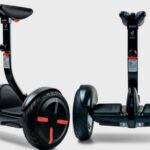 Segway vs Hoverboard: Unveiling the Key Differences
Segway vs Hoverboard: Unveiling the Key Differences

